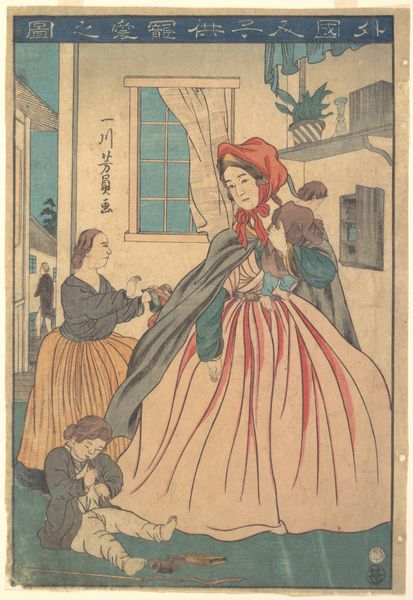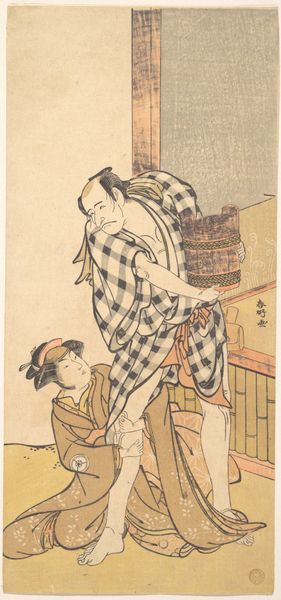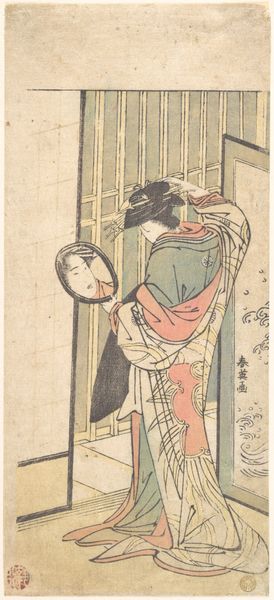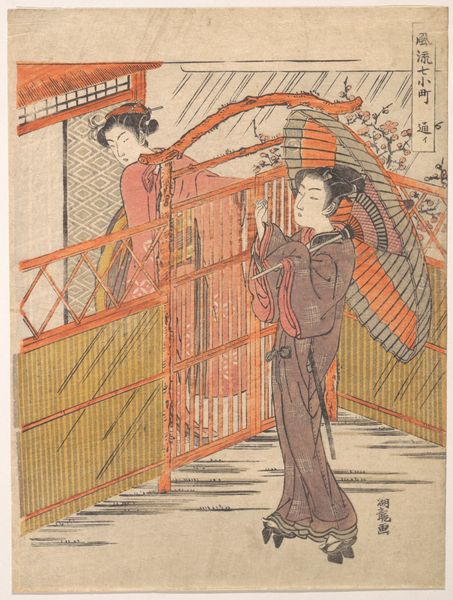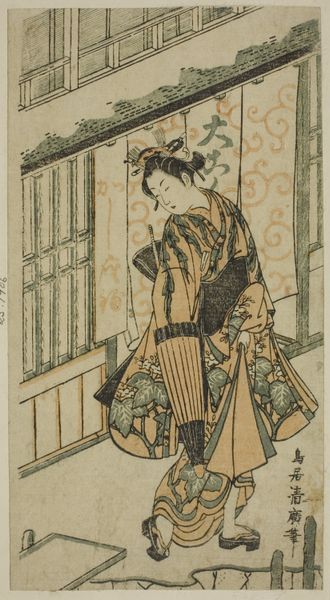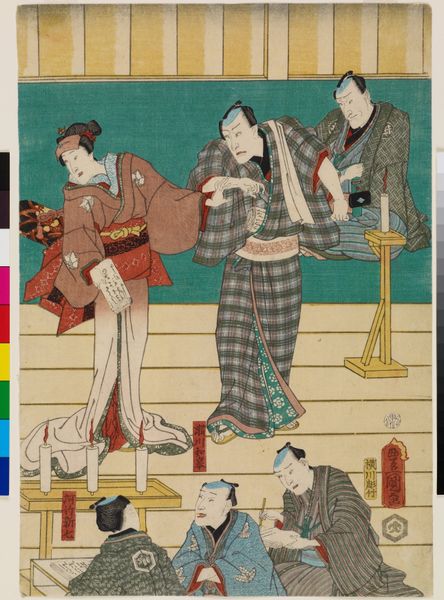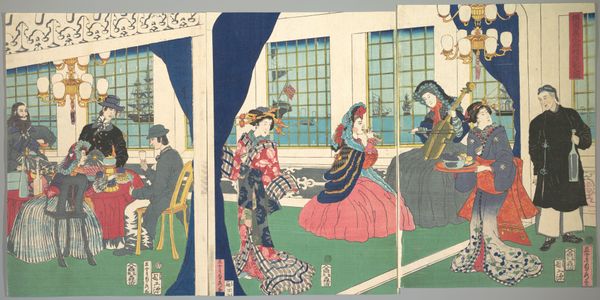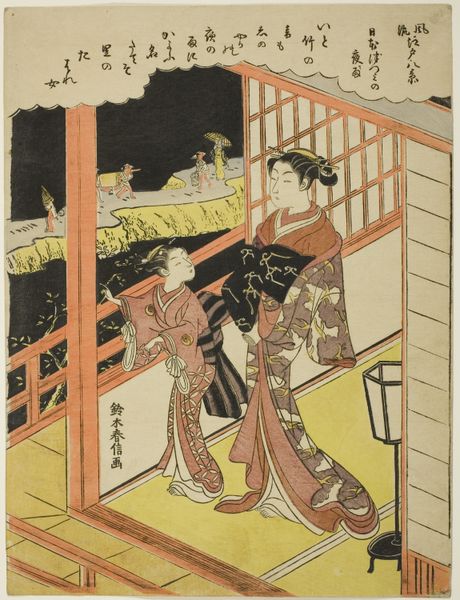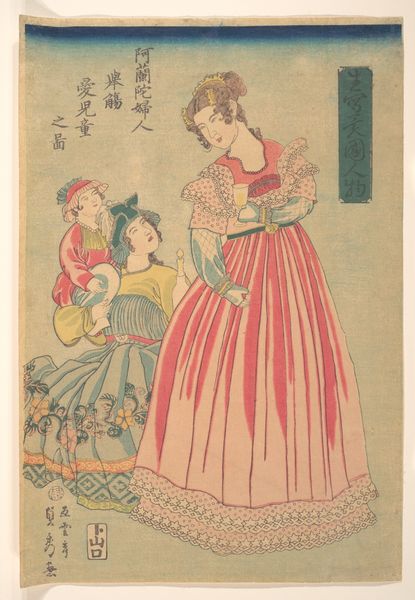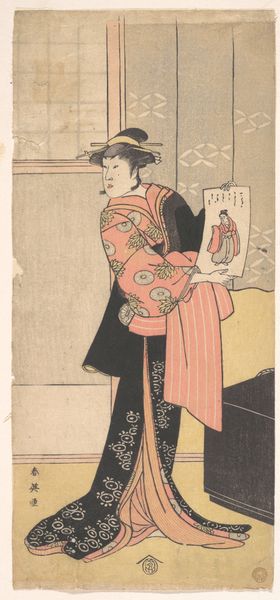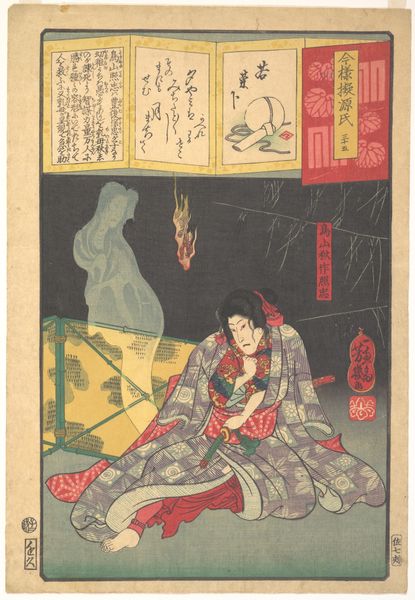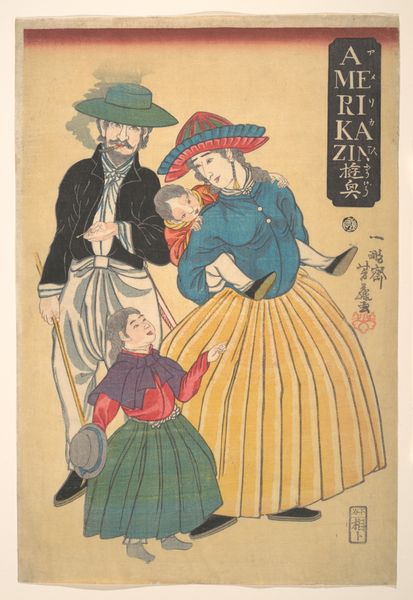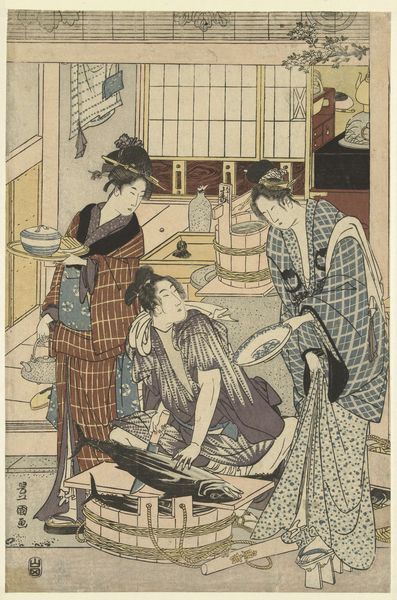
French Woman and Girl, from the series Foreign Merchants in Yokohama (Yokohama shōka ijin no zu) 1861
0:00
0:00
#
portrait
#
girl
# print
#
asian-art
#
caricature
#
ukiyo-e
#
figuration
#
genre-painting
Dimensions: Image: 14 1/2 x 9 7/8 in. (36.8 x 25.1 cm)
Copyright: Public Domain
Editor: So, this is Utagawa Sadahide’s “French Woman and Girl, from the series Foreign Merchants in Yokohama," a woodblock print from 1861. I’m immediately struck by how the artist portrays these foreigners with such large features and distinctive clothing. What's your take on it? Curator: Well, this print is part of a larger phenomenon of "Yokohama-e," or Yokohama pictures. These prints depicted foreigners and their goods, produced at a time when Japan had just opened up to the West. The caricatured appearance wasn't necessarily malicious, but rather reflects a fascination with and a limited understanding of foreign cultures. The print served as a form of visual documentation, feeding the public's curiosity about these newcomers. Why do you think there's so much emphasis on the "exotic" items they carry? Editor: That's insightful! It makes me think about how images play a crucial role in shaping public perception, especially when direct contact is limited. Maybe those objects highlight what Japanese society found intriguing or unusual. Did these prints play a role in shaping the narrative around Westerners at the time? Curator: Absolutely. These prints, mass-produced and widely circulated, were instrumental in constructing a visual narrative of the "foreign Other." They presented the West to a Japanese audience, filtered through the lens of Japanese artistic and cultural conventions. Did the government or any other authority attempt to censor or guide the narrative these images presented? Editor: I hadn’t thought about censorship. Perhaps it was less about outright censorship and more about a subtle cultural translation – reinterpreting foreignness within familiar artistic frameworks. The exaggerated features might then be read not just as caricature, but as a way of making the unfamiliar "knowable" to the Japanese audience. It seems a bit complicated! Curator: Indeed. Art serves a public function that cannot be divorced from historical and political implications, subtly reflecting evolving perceptions of the West and its place in a changing world. Editor: It’s really eye-opening to think about how something seemingly simple can carry so much historical weight. Thanks for sharing your insights.
Comments
No comments
Be the first to comment and join the conversation on the ultimate creative platform.
